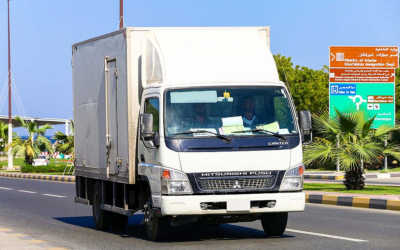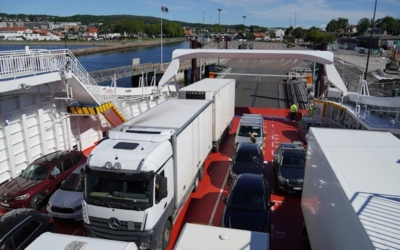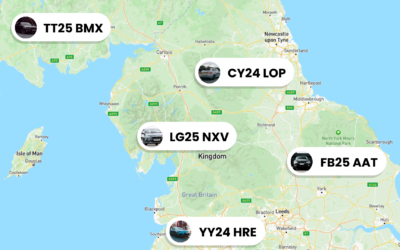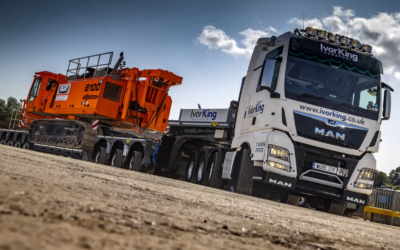Fleet Electrification: TCO & Charging Guide for Directors
Practical guidance for fleet managers planning the switch to electric vehicles. This guide walks you through the financial model, route matching, charging strategy and operational changes you need to evaluate a successful fleet electrification programme. Read on to get clear steps, the right questions to ask suppliers and the next actions to present to your leadership team.
Executive summary — why electrify now
For most fleets, fleet electrification is no longer a speculative project — it’s a strategic transition driven by fuel savings, tighter emissions regulations and improving vehicle technology. As a fleet manager, your job is to separate headline promises from reality: understand the true Total Cost of Ownership (TCO), identify which routes and vehicles are suitable today, and plan the infrastructure and training that will keep operations running smoothly.
Key reasons to act now include falling battery costs, growing manufacturer availability, government incentives and rising diesel prices in many regions. That said, electrification introduces new variables — charging infrastructure, grid capacity, and residual value uncertainty — that must be modelled into any procurement decision.
Start by setting clear KPIs: cost per mile, payback period, vehicle uptime, and emissions reduction. These will be your north star when you run TCO models and measure pilot outcomes.
Business drivers and KPIs
List the main business drivers for your fleet (fuel & maintenance savings, sustainability targets, regulatory compliance) and convert them into quantifiable KPIs. Use these metrics when presenting to finance: total cost per vehicle-year, payback months, and fleet-wide CO2e reduction.
Common risks and decision trade-offs
Document the top risks — range limitations, charging-capital, battery degradation, grid upgrades — and how you’ll mitigate them. Be transparent with stakeholders about trade-offs: an EV may reduce fuel spend but increase upfront capital or require depot rewiring.
Calculating Total Cost of Ownership (TCO) for EV fleets
Building a robust TCO model is crucial to make confidence-based decisions about fleet electrification. A credible TCO should compare like-for-like duty cycles across a consistent time horizon and include all direct and indirect costs. Use a conservative approach for uncertain items (battery life, resale value) so results are defensible to procurement and finance teams.
Include both hard costs (vehicle purchase or lease, charging hardware, installation, energy costs) and soft costs (downtime during installation, training, process changes). Don’t forget incentives and grants which can materially affect payback. Finally, express outcomes in both cost-per-mile and net present value (NPV) terms for leadership who prefer financial metrics.
TCO components to include
Your model should capture: purchase/lease price, incentives/rebates, energy consumption (kWh per 100km or per mile) vs diesel/litre equivalents, maintenance & repair differentials, insurance impacts, charging infrastructure CAPEX/OPEX, downtime, and residual value assumptions. Make these line items transparent in your spreadsheet so assumptions can be stress-tested.
Modeling approach and time horizon
Typical horizons are 3–7 years depending on vehicle class and expected battery life. Use a discount rate aligned with your organisation’s capital policy and run base, best and worst-case scenarios. Convert results into familiar metrics — payback months and cost per mile — to make the case concise for non-technical stakeholders.
Sensitivity analysis and reporting
Stress-test variables: electricity price shifts, diesel volatility, battery degradation rates and utilisation changes. Present sensitivity charts (break-even miles, NPV vs electricity price) so executives can see how outcomes change with market movement. If you need a starting point, Traknova’s resources on TCO and ROI provide templates and calculator logic — a helpful companion when building your own model (Telematics ROI concepts map well to EV TCO analysis).
Route profiling and vehicle selection
The single biggest determinant of a successful fleet electrification pilot is accurate route profiling. If you pair the wrong vehicle to the wrong duty cycle, even the most generous incentives won’t save your rollout.
Start with high-resolution telemetry: average miles per shift, peak daily distance, dwell times, payload and stop patterns. Use clustering to group routes into families — short urban runs, medium peri-urban rounds, or long-haul trunking — and match them to the appropriate EV form factor (light vans, 7.5t e-trucks, etc.).
Good profiling reduces risk, shortens pilot timelines, and often reveals that a partial electrification strategy (mixing BEVs and PHEVs) is the most cost-effective early step.
Duty-cycle analysis and telemetry data needs
Collect at least 60–90 days of telematics data (GPS traces, idle time, speed, payload proxies) to capture variability. If you don’t have telemetry, start with manual logs, then accelerate to telematics. For fleets already using vehicle Tracking solutions, the data can be exported and clustered to identify candidate routes quickly.
Choosing the right EVs for each mission
Evaluate range with realistic buffers, payload capacity, energy efficiency (kWh/100km) and warranty terms. Factor in upfit needs (racking, refrigeration) early — upfits can affect range and warranty coverage. If a route occasionally exceeds range, consider opportunity charging or pairing an ICE/PHEV as a backup during transition.
Pilot fleet sizing and rollout sequencing
Run small pilots (5–20 vehicles depending on fleet size) on the most straightforward route clusters. Use pilots to validate assumptions on energy use, charger availability and technician readiness. Only scale once you meet pre-defined KPIs: energy cost per mile, uptime and driver acceptance.
Charging infrastructure and grid considerations
Designing the right charging strategy is as important as choosing vehicles. The two dominant choices are depot (overnight) charging or opportunity/public charging — most fleets will use a hybrid approach. Your charging plan should minimise both capital expenditure and operational friction while ensuring vehicles meet daily duty requirements.
Coordinate with your facilities and local utility early to avoid costly surprises in transformer upgrades or demand charges. Smart charging, load management and time-of-use optimisation can reduce ongoing energy costs and allow you to scale more vehicles without immediate grid reinforcement.
Depot vs opportunity/public charging strategy
Depot charging is operationally simpler and often cheaper at scale due to predictable dwell. Opportunity charging is useful where vehicles need top-ups midday or have long routes. Choose based on dwell time, route cadence and access to reliable public networks. A hybrid strategy often gives the best trade-off between CAPEX and operational flexibility.
Charger types, power levels and load management
Decide between AC slow chargers for longer dwell and DC fast chargers for quick turnarounds. Use load-management systems to stagger starts and avoid peak-demand penalties. Smart chargers can integrate with scheduling software to charge vehicles during off-peak periods and support demand response programmes.
Site assessment, electrical upgrades, and utility programs
Conduct a full site survey: available capacity, metering, cable runs and room for charger placement. Engage utilities early to explore incentives, special EV tariffs and potential for on-site generation or storage. Some utilities offer grants or reduced connection fees for fleet electrification pilots — these can materially reduce upfront costs.
Ready to see how this works in your fleet? Book a short demo with Traknova to review your routes, run a preliminary TCO and get a tailored rollout plan: Book demo. We’ll show you how telematics-driven route profiling and smart charging can accelerate your fleet electrification.
Operations, staffing, financing and risk management
Electrification changes more than just fuel bills — it touches maintenance, staffing, procurement and risk policies. Success depends on preparing your team, choosing the right financing approach and embedding policies to encourage correct charging behaviour.
Operational readiness includes upskilling technicians for high-voltage systems, updating depot processes for EV servicing and establishing clear safety protocols. On the financing side, evaluate capex vs opex (leases), battery leases and manufacturer buy-back or warranty programmes to manage residual value risk.
Finally, put data and policy in place to monitor and manage risk: telematics for utilisation and charging patterns, clear charging policies for drivers, and dashboard KPIs you review weekly during the rollout.
Maintenance, training and fleet processes
EV maintenance is generally lower but different. Plan technician training for EV systems, create new safety procedures, and adjust spare-vehicle pools during initial rollouts. Update preventive maintenance schedules to reflect lower-moving parts counts but include battery and high-voltage checks.
Financing, incentives and procurement strategies
Explore leasing and battery-as-a-service options to reduce up-front costs. Map all local incentives and grants into your TCO model. Where possible, include warranty protections for battery degradation and negotiate residual value guarantees to reduce risk on balance sheets.
Policies, reporting and change management
Create charging policies (who charges where and when), update your Fleet Management rules and ensure emissions reporting aligns with corporate targets. Implement an internal communications plan and measure driver satisfaction as part of your success criteria.
Conclusion & next steps
Fleet electrification is a multi-dimensional change that pays off when you combine accurate TCO modelling, route-matching, pragmatic charging strategies and operational readiness. Start small with data-driven pilots, get utility and facilities teams involved early, and use clear KPIs to validate scale-up.
If you want help turning your telematics and route data into a practical EV pilot and full rollout plan, Traknova offers tailored consultations and demos to show what electrification would look like for your fleet. Book demo to see a sample model and custom recommendations.
Frequently Asked Questions (FAQs)
How long before EVs pay back compared to diesel?
Payback depends on vehicle class, duty cycle, energy prices and incentives. For many urban delivery vans, payback ranges from 2–5 years when incentives and maintenance savings are included. Use a TCO model with a conservative resale assumption to estimate your fleet’s specific payback.
What routes are best for early electrification?
Short, predictable urban routes with regular overnight depot dwell are the easiest to electrify first. Routes with predictable daily mileage and low seasonal variability minimise range risk and simplify charger planning.
Do I need to upgrade my electricity supply?
Maybe. Large depots often require transformer or connection upgrades if multiple high-power chargers are installed. Early coordination with your utility can identify time-of-use tariffs or demand-charge mitigation strategies to reduce costs.
How should I handle technician training?
Plan certified HV safety training and EV-specific diagnostic training. Many OEMs provide technician programmes; consider partnering with a local training provider for scale-ups.
What if public charging networks are unreliable?
Design your rollout assuming limited public availability; prioritise depot charging and consider opportunity charging only where reliable networks exist. Hybrid strategies reduce dependence on public infrastructure during early phases.
Get involved — feedback & sharing
Thanks for reading. Your feedback helps us improve these guides: what was most useful, what did we miss, and which topic would you like next — range modelling, grid tariffs, or EV procurement strategies? Please share this article with colleagues on LinkedIn or Twitter, and if you’ve got five minutes, leave a comment or drop us a note.
Question for readers: What is the single biggest barrier to electrifying your fleet today? Reply or share — we’re listening.
Book a personalised consultation with Traknova to review your routes, run a TCO, and get a step-by-step rollout plan. Book demo or Contact us to get started.
Related reading: For deeper dives into ROI and maintenance topics referenced above, see Traknova’s resources on Telematics ROI, Fleet Electrification Guide for Fleet Directors, and Predictive Maintenance for Fleets.










